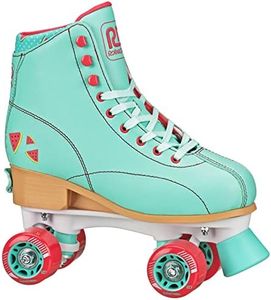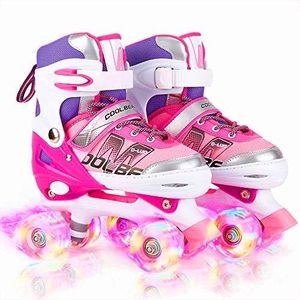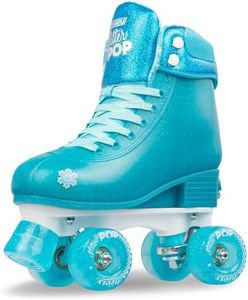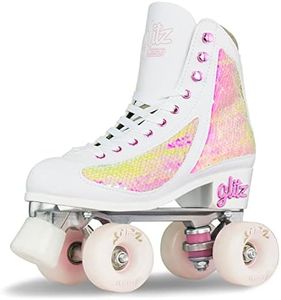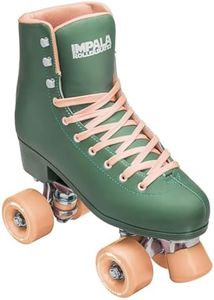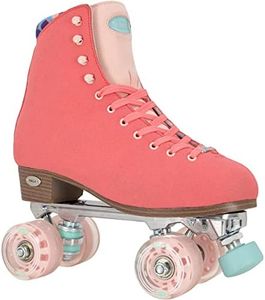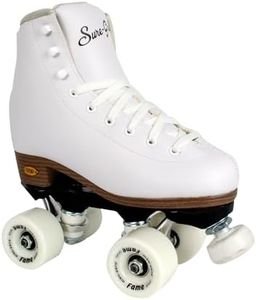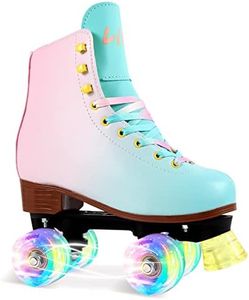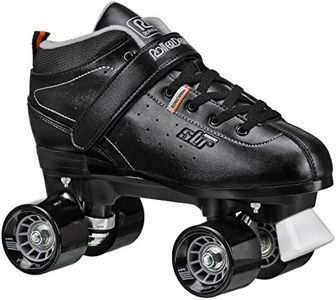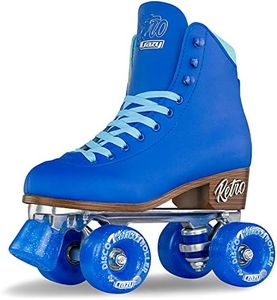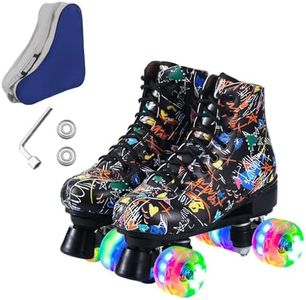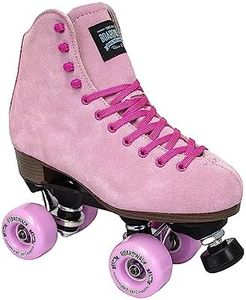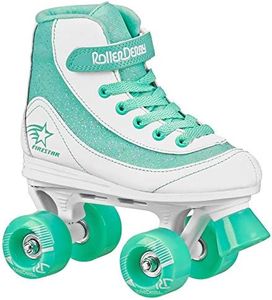We Use CookiesWe use cookies to enhance the security, performance,
functionality and for analytical and promotional activities. By continuing to browse this site you
are agreeing to our privacy policy
10 Best Outdoor Roller Skates
From leading brands and best sellers available on the web.Buying Guide for the Best Outdoor Roller Skates
Choosing the right outdoor roller skates is an exciting process that comes down to matching your personal needs and skating style with the right features. Outdoor roller skates are designed to handle rougher and more uneven surfaces like sidewalks and paved paths. To make a good choice, think about where you plan to skate, how often you’ll use them, and what kind of skating you want to do. Focus on comfort and safety, and don’t get overwhelmed by all the technical terms—understanding the key specs will make your decision much easier.Wheel Hardness (Durometer)Wheel hardness is measured by something called 'durometer' and is usually written as a number followed by an 'A' (like 78A). This spec tells you how soft or hard the wheels are. For outdoor skating, softer wheels (typically 78A to 85A) are better because they absorb bumps and provide a smoother ride on rough surfaces. Harder wheels (above 85A) are more suitable for smooth indoor surfaces and will feel too bumpy outdoors. So, if you plan to mostly skate outside, stick to softer wheels to get a comfortable experience. Only consider harder wheels if you’ll switch often between indoors and outdoors and don’t mind a bit of a rougher ride outside.
Wheel SizeThe diameter of the wheels affects how your skates handle. Smaller wheels (typically 57-62mm) are easier to control and accelerate quickly, but they require more effort to maintain speed. Larger wheels (63mm and above) roll better over cracks and rough pavement, offering a smoother ride and higher top speeds. For most outdoor skaters, medium to large wheels give the best balance between control and comfort. Choose bigger wheels if you want to travel longer distances on rougher paths, or go for smaller ones if you care more about agility and quick turns.
Boot Material and DesignThe boot part is what holds your foot and impacts both comfort and support. Boots can be made of synthetic materials, leather, or a mix. Softer, padded boots give you more comfort for longer sessions, while stiffer boots provide better support and control, especially for more advanced moves. High-cut boots offer more ankle support, which is helpful for beginners or those prone to twisting their ankles, while low-cut boots allow more freedom of movement. Your choice should depend on how much support you need and your experience level—in general, beginners and casual skaters prefer comfort and support, while experienced skaters may choose lighter, more flexible options.
Plate MaterialThe plate is the part under your boot that holds the wheels and axles together. Plates can be made from plastic/nylon or metal (often aluminum). Nylon plates are lighter and usually more affordable, providing enough strength for most casual skating and are easier on your legs. Metal plates are more durable and responsive, better for those who skate hard or want more precision in their movements. For beginners or lighter skaters, nylon works great; heavier or more serious skaters might prefer metal plates for added durability and control.
Bearing RatingBearings help the wheels spin smoothly. They’re often rated using the ABEC scale (like ABEC-5 or ABEC-7). Higher numbers don’t always mean you’ll go faster, but they usually indicate a smoother and longer roll. For outdoor skating, since dirt and rough surfaces are common, don’t get too caught up in the numbers; most quality bearings will work fine. Pick bearings that are sealed and easy to clean, since outdoor conditions can get them dirty easily. If you plan to skate faster or longer distances, you might look for higher-rated ones, but for most people, standard or mid-range bearings do the job well.
Toe Stop TypeToe stops are the rubber parts at the front of the skates that help you stop or brake. There are fixed toe stops (non-adjustable) and adjustable toe stops. Adjustable toe stops let you customize the height, making it easier to control your stops. Larger, softer stops grip outdoor surfaces better and are helpful for beginners or anyone stopping frequently. Fixed toe stops are generally fine for casual use, but adjustables give more flexibility, especially if you want to learn tricks or skate in crowded places.
Fit and SizingGetting the right fit is crucial for both safety and comfort. Skates that are too loose can cause blisters and make it hard to control your movements, while skates that are too tight will be uncomfortable and could damage your feet over time. Most brands have different sizing charts, so always check before deciding. Try to wear the socks you plan to skate in when fitting your skates. If you’re torn between two sizes, it’s often better to go a little snug and let them stretch out as you use them – just make sure your toes aren’t cramped.

